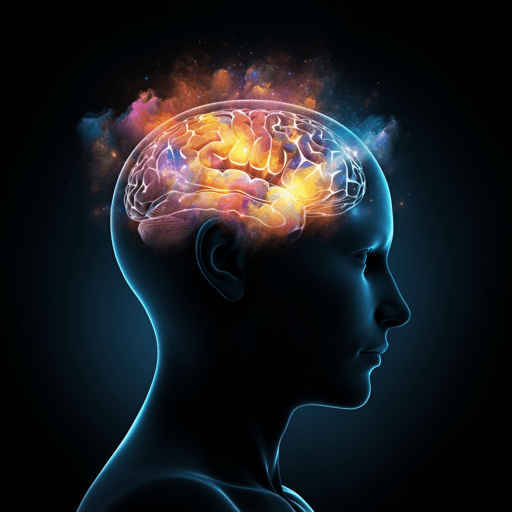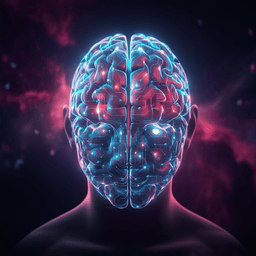
Psychology
Recent advances in the neuroscience of spontaneous and off-task thought: implications for mental health
A. Kucyi, J. W. Y. Kam, et al.
People spend 30–50% of awake life off-task; this review synthesizes neuroscience advances linking spontaneous thought and mind-wandering to the default mode network, hippocampal memory processes (sharp-wave ripples, replay), and neuromodulatory systems, and explores how distinct brain states relate to adaptive or maladaptive mental health outcomes and new avenues for personalized biomarkers and therapies. This research was conducted by Aaron Kucyi, Julia W. Y. Kam, Jessica R. Andrews-Hanna, Kalina Christoff, and Susan Whitfield-Gabrieli.
~3 min • Beginner • English
Introduction
The paper reviews how spontaneous and off-task thought—estimated to occupy ~30–50% of waking time—relates to mental health. Off-task thought encompasses experiences such as reminiscing, imagining, problem-solving, and creativity, but can also manifest maladaptively as rumination, worry, and suicidal ideation. With rising psychiatric symptom prevalence and treatment resistance, there is a pressing need to understand neural mechanisms underlying spontaneous and off-task thought to inform novel interventions (e.g., neuromodulation). The Dynamic Framework of Thought (DFT) posits that spontaneous thought emerges from flexible dynamics across large-scale brain networks (e.g., the default mode network, salience, and frontoparietal-control networks). The review synthesizes recent neuroscientific developments—neuroimaging, neurostimulation, lesion, neurophysiology, and neuromodulatory systems—to clarify mechanisms and clinical implications.
Literature Review
Conceptualization: The term “spontaneous thought” spans mind-wandering, dreaming, creative thinking, etc., but its definition is evolving. The DFT distinguishes mental contents (what one thinks about) from dynamics (how thought flows), defining spontaneous thought as relatively unconstrained dynamics. There is debate over whether repetitive, inflexible thoughts (rumination, worry) fit within spontaneous thought or represent automatically constrained modes. Context and content critically shape whether off-task thought is adaptive (e.g., future-oriented planning, creativity) or maladaptive (e.g., negative past-oriented thought). Empirical work often measures content rather than dynamics, though emerging studies assess free movement of thought and temporal change.
Mental health links: Off-task thought is associated with impaired performance across tasks (executive control, sustained attention, memory encoding), real-world contexts (classrooms, reading, driving), and with perseverative thinking, mood lowering, stress, and sleep impairment. Excessive, unintentional off-task thought correlates with symptoms in depression, OCD, eating disorders, and ADHD. Adaptive aspects include mildly pleasant average affect, mood improvements in some contexts, prospective bias (future-oriented daydreaming) aiding problem-solving and creativity, and insight generation.
Methodological advances: Experience-sampling during neuroimaging (fMRI, EEG) directly links brain activity to self-reported thought states. Probe design and population differences influence responses. Alternatives include self-caught reporting, free association, and think-aloud paradigms; some use cues that indirectly elicit involuntary associations. Multi-dimensional experience-sampling maps features like emotion, self-relevance, detail, imagery modality, and dynamics; mind-blanking is being studied as a distinct state. Clinical applications include ADHD and treatment-resistant depression. Causal approaches (tDCS, intracranial stimulation, lesion) complement correlative neuroimaging. The field is expanding in paradigms, phenomenologies, populations, and techniques.
Methodology
This is a narrative review synthesizing findings across: (1) Functional neuroimaging (fMRI) with online experience-sampling to assess trial-by-trial thought states; dynamic functional connectivity analyses pre-probe; connectome-based predictive modeling of off-task thought; resting-state studies of intrinsic networks and their traits; (2) Electrophysiology: intracranial EEG (iEEG) linking network coherence (e.g., amygdala-hippocampus beta coherence) to mood fluctuations; EEG/MEG detection of hippocampal sharp-wave ripples (SWRs) and replay events; (3) Causal methods: transcranial direct current stimulation (tDCS) targeting DMN and FPCN nodes; intracranial electrical stimulation and lesion studies mapping causal roles of DMN subsystems (e.g., MTL, ventromedial prefrontal cortex, hippocampus) in spontaneous thought content; (4) Pupillometry as a proxy for noradrenergic activity to infer arousal-related dynamics during off-task thought; (5) Pharmacology and neuroimaging of serotonergic modulation via psychedelics (psilocybin, LSD), assessing alterations in DMN and thalamic-sensory connectivity. The review also outlines proposed methodological innovations such as brain-triggered experience-sampling and idiographic modeling for personalized biomarkers.
Key Findings
- Off-task thought occupies ~30–50% of adult waking time and has both adaptive (planning, creativity, insight) and maladaptive (rumination, worry) forms, with context, content, and dynamics moderating mental health outcomes.
- Default Mode Network (DMN): Experience-sampling fMRI links off-task thought to increased DMN activation or decreased deactivation, but the relationship is context-dependent and not one-to-one; DMN activation can also support task-guided working memory. DMN functional connectivity reflects a mixture of state (experience, arousal/attention) and trait influences. Dynamic connectivity studies show both increases and decreases in within-DMN connectivity with off-task thought, varying by subregion, suggesting nuanced intra-individual dynamics.
- DMN subsystems: Dorsomedial PFC subsystem supports abstract/verbal cognition (mentalizing/language), and posterior MTL subsystem supports contextual, imagery-based thought (episodic memory/future thinking). MTL subsystem coupling with hippocampus is central to episodic thought. Lesions/degeneration affecting ventromedial PFC or hippocampus reduce spontaneous past/future-oriented thoughts; tDCS to posterior inferior parietal lobule reduced negative past-focused thought, linking MTL subsystem to affective temporal focus.
- Large-scale networks: Frontoparietal control network (FPCN) imposes deliberate constraints and interacts with DMN to guide thought; tDCS to FPCN nodes can increase or decrease off-task thought depending on context. Salience network, coupled with arousal/noradrenergic systems, may impose automatic constraints relevant to rumination/worry; connectivity among salience, FPCN, and DMN relates to negative thinking tendencies.
- Predictive modeling: Whole-brain functional connectivity patterns predict trial-by-trial off-task thought, highlighting decreased anticorrelation between DMN and FPCN and decreased DMN-sensorimotor coupling (perceptual decoupling). The same model generalizes to adults with ADHD, who report more off-task thought and over-express the network pattern.
- Intracranial EEG: Mood fluctuations are predicted by variability in beta-range coherence within an amygdala-hippocampus network, implicating salience-DMN interactions and synchronized oscillatory dynamics in subjective experience.
- Hippocampal SWRs and replay: SWRs occur during offline states, propagate to cortex, co-occur with DMN activation, and are linked to spontaneous replay of past/future sequences. SWR frequency increases prior to spontaneous recollection in humans, suggesting a role in initiating or shaping spontaneous thought; disruptions in replay/SWRs are observed in schizophrenia and hypothesized in depression/anxiety (e.g., sustained SWRs driving worry/rumination).
- Neuromodulatory systems: Noradrenergic arousal (proxied by pupil size) shows mixed tonic changes during off-task thought, consistent with an inverted U relationship; phasic pupil responses to external stimuli decrease during off-task thought, indicating perceptual decoupling, while spontaneous phasic dilations align with anterior insula activations, suggesting salience coupling. Serotonergic modulation via psychedelics (5HT2A agonism) acutely reduces DMN and thalamic-sensory connectivity, associates with ego dissolution and creative insights, and may represent an extremely unconstrained spontaneous thought state with potential therapeutic implications.
- Mind blanking: Distinct from mind-wandering, associated with DMN deactivation during intentional mind blanking; elevated in ADHD and linked to performance impairments in depression, warranting inclusion in experience-sampling protocols.
Discussion
The review integrates multi-modal evidence to show that spontaneous and off-task thought arises from dynamic interactions across DMN subsystems, control and salience networks, hippocampal memory processes (SWRs/replay), and neuromodulatory (noradrenergic/serotonergic) systems. This framework explains how thought can become adaptive—supporting episodic simulation, planning, creativity, and insight—when flexible dynamics and appropriate constraints are balanced, and maladaptive—manifesting as rumination, worry, intrusive off-task thought, or mind blanking—when constraints are excessive, misapplied, or network dynamics are disrupted. The nuanced roles of DMN activation, functional connectivity fluctuations, and subsystem specialization emphasize that no single biomarker suffices; instead, predictive patterns spanning multiple networks better capture the phenomenology. Hippocampal SWRs and replay provide mechanistic substrates for thought initiation and sequence recombination, potentially underpinning both creative insights and perseverative negative thought when dysregulated. Neuromodulatory fluctuations shape global brain states and constraints, offering therapeutic entry points (e.g., stimulants, psychedelics) to modulate spontaneity, decoupling, and affect. Clinically, mapping large-scale dynamics to experience in ADHD, depression, and schizophrenia suggests personalized targets for neuromodulation and biomarkers to guide treatment.
Conclusion
The neuroscience of spontaneous and off-task thought has advanced by clarifying DMN roles, large-scale network dynamics, hippocampal SWRs/replay, and neuromodulatory influences, with clear implications for mental health. Future progress will hinge on methodological innovations: (1) richer phenomenological mapping via free association, think-aloud, and multi-dimensional experience-sampling; (2) brain-triggered experience-sampling to efficiently capture targeted neural-experiential events (e.g., SWRs, DMN states); (3) idiographic, personalized predictive models to account for individual variability in thought and neural patterns; and (4) integration of causal approaches (tDCS, intracranial stimulation, deep brain stimulation) with biomarkers to develop tailored therapies. These directions aim to deliver mechanistic clarity, reliable biomarkers, and personalized interventions to understand and improve mental health outcomes associated with spontaneous and off-task thought.
Limitations
- Conceptual: The definition of spontaneous thought remains debated; empirical work often emphasizes content over dynamics, limiting precise mapping to DFT constructs.
- Measurement: Experience-sampling probe phrasing, presentation, and population differences bias responses; resting-state clinical studies rarely include concurrent experience measures, hindering state-trait disentanglement.
- Modality constraints: fMRI has limited temporal resolution and indirect activity measures; iEEG coverage is sparse and clinically constrained; pupillometry is an imperfect proxy for noradrenergic state due to variability and cholinergic influences.
- Causality: tDCS results are mixed and context-dependent; intracranial stimulation studies suggest lower elicitation rates in DMN and are limited to specific clinical contexts; lesion evidence is limited to certain subsystems.
- Mechanistic gaps: Direct causal links between hippocampal SWRs/replay and conscious spontaneous thought are not firmly established; neuromodulatory effects (e.g., psychedelics) are multifaceted and intra-individual variability during altered states is understudied.
- Generalizability: Most findings are group-level; substantial inter- and intra-individual variability challenges universal biomarkers; clinical populations exhibit altered phenomenology requiring idiographic approaches.
- Phenomenology: Mind blanking definitions may conflate absence of thought with absence of experience; protocols must distinguish these states to avoid interpretive errors.
Related Publications
Explore these studies to deepen your understanding of the subject.







